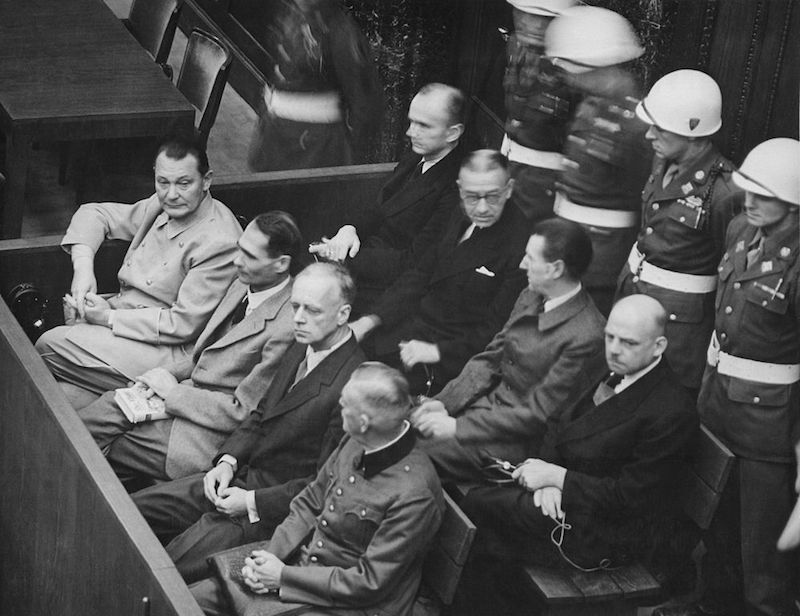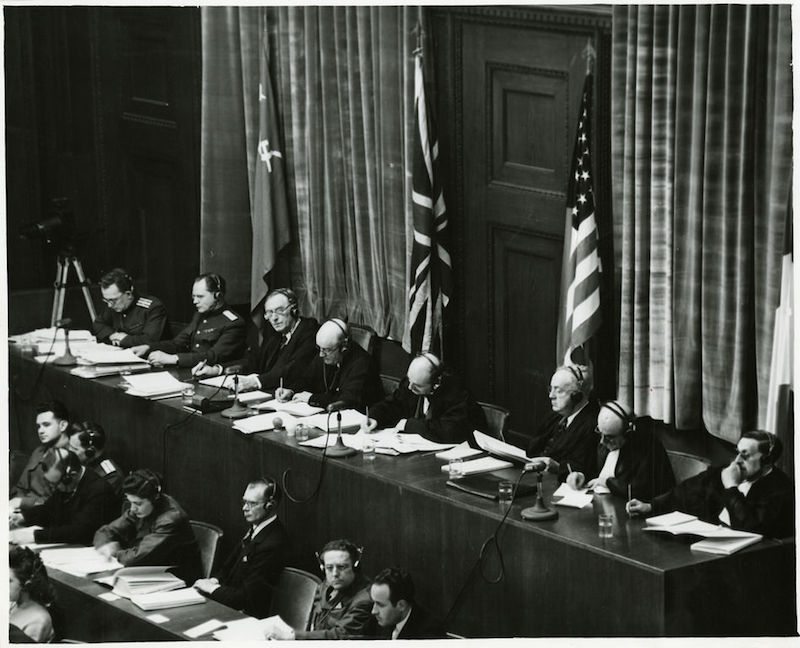Nuremberg Trials
Episode #5 of the course “Trials that shaped the modern world”
The Nuremberg trials, as they are commonly known, took place in 1945 and 1946 and were a series of tribunals for high-ranking Nazi officials. For the first time in history, an international court was established by a cooperative of nations at the end of a war to try people responsible for war crimes.
Adolf Hitler of the Nazi party established the Third Reich government in Germany in 1933. Over the following 12 years, he ordered his government officials to systematically oppress and destroy the lives of millions of people. It is estimated that by the end of World War II, over 12 million people died from Hitler’s policies. Nearly another 10 million had fled Europe. The impact of Hitler and the Third Reich was earth-shattering.

Defendants in the dock. The main target of the prosecution was Hermann Göring (at the left edge on the first row of benches), considered to be the most important surviving official in the Third Reich after Hitler’s death
In 1945, Hitler committed suicide, but many of the high-ranking Nazi officials who operated the Third Reich lived past the end of the war. Since the war and its efforts to end it had been an international alliance, leaders in the US convinced the UK, Russia, and France to join them in holding criminal proceedings. Collecting evidence of the crimes would historically cement the atrocities and establish a standard for future international war crimes prosecution.
Twenty-two high-ranking men were tried in Nuremberg, Germany. Many reported to Hitler and orchestrated his directives. Many were businessmen who profited from the government’s operations or doctors who were allowed access to the facilities. While several received execution, there were some who received imprisonment, or even no sentence at all.

Judges sitting in Nuremberg, from left to right Volchkov, Nikitchenko, Birkett, Sir Geoffrey Lawrence, Biddle, Parker, Donnedieu de Vabres and Falco
The three types of crimes brought against the men were: crimes against peace (orchestrating or supporting violence), war crimes (violations of the customs of war), and crimes against humanity (murder, torture, and other violence).
These proceedings established the foundation for a permanent international court, an official declaration for human rights, and subsequent international tribunals for war criminals and people who commit crimes against peace and humanity.
Recommended books
“The Rise and Fall of the Third Reich: A History of Nazi Germany” by William L. Shirer
“The Nuremberg Interviews” by Leon Goldensohn
Share with friends

